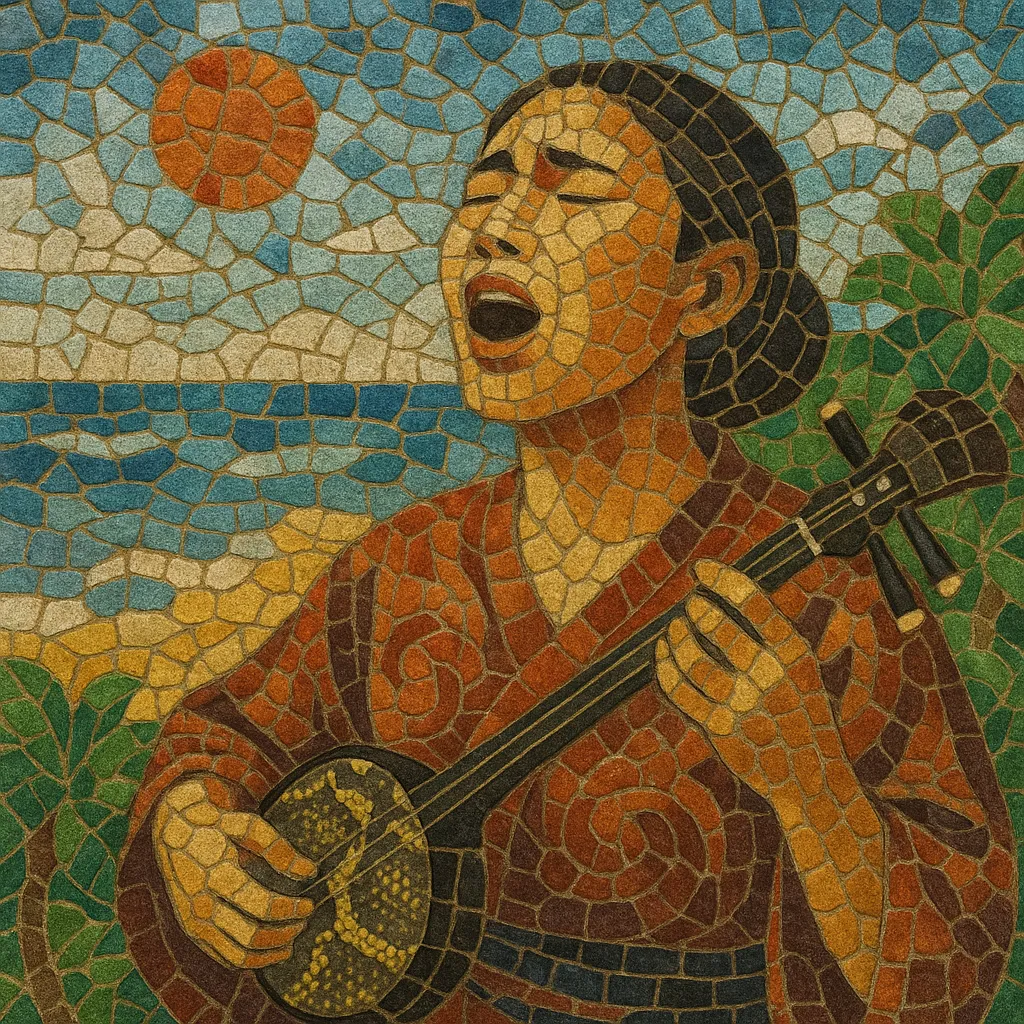Shima-uta (literally “island songs”) refers to the traditional folk song styles of the Ryukyu archipelago, especially Okinawa and the Amami Islands in southern Japan. It centers on highly expressive vocals and the distinctive three‑string sanshin lute, with lyrics often sung in local island languages and dialects.
Musically, shima-uta favors pentatonic scales associated with Ryukyuan music, strophic song forms, and flexible rhythm that can range from free, rubato delivery to lively dance grooves. The vocal style is ornamented and emotive—often featuring falsetto timbres (particularly in the Amami tradition), melismas, and call‑and‑response interjections. Themes commonly invoke the sea, love, work, migration, celebration, and remembrance, giving the repertoire a strongly nostalgic, place‑rooted character.
Shima-uta arose within the Ryukyu Kingdom’s island cultures and local village traditions. The sanshin—adapted from the Chinese sanxian—became widespread by the early modern era and anchored island song performance. Under the Satsuma domain’s control from the 1600s, the Amami islands developed a particularly poignant vocal style, and by the 1700s–1800s many hallmark melodies and performance practices had taken shape.
In the early 20th century, shima-uta began to be documented on shellac and later LP records, preserving regional repertoires and dialects. Despite wartime upheaval and the devastation of the Battle of Okinawa, community gatherings, festivals, and local radio kept shima-uta alive. Musicians performed in social spaces and US‑occupied Okinawa’s clubs, sustaining the tradition across generations.
The 1970s folk and roots revival in Japan fostered renewed interest in island songs. Masters such as Rinsho Kadekaru and Seijin Noborikawa recorded influential albums, while artists like Shoukichi Kina and later Nenes fused shima-uta elements with rock and pop instrumentation. In the 1990s, the word “shima-uta” entered the national lexicon via mainstream hits and media coverage, which helped carry Okinawan/Amami sounds beyond the islands.
The 2000s saw crossover success by Amami and Okinawan singers (e.g., Chitose Hajime, Ikue Asazaki, Rimi Natsukawa), whose recordings emphasized traditional vocal color and sanshin within contemporary arrangements. Community schools, festivals, and cultural designations continue to support transmission of local repertoires, while modern artists explore respectful hybrids that keep the core melodic language, vocal nuance, and island identity at the forefront.


